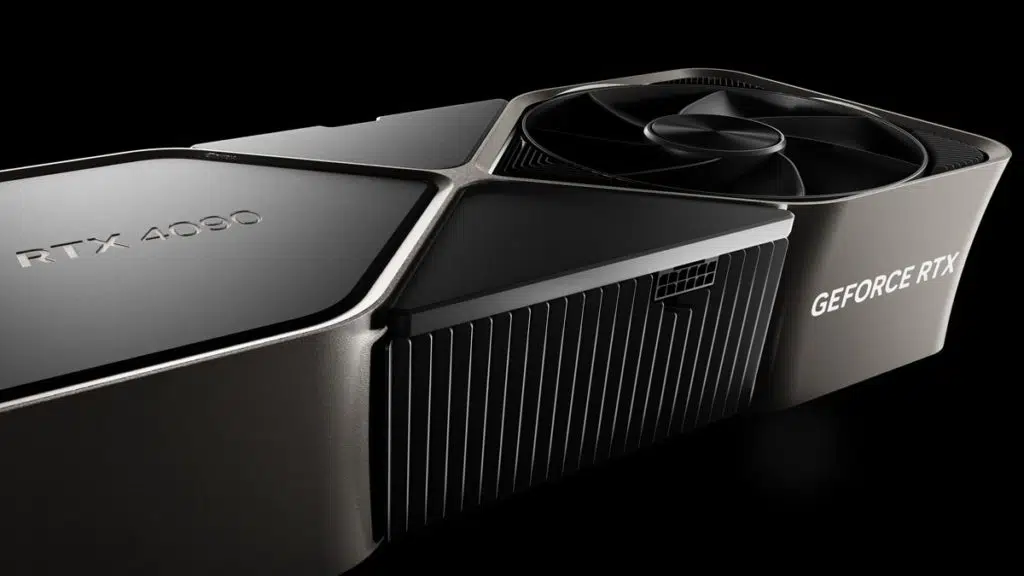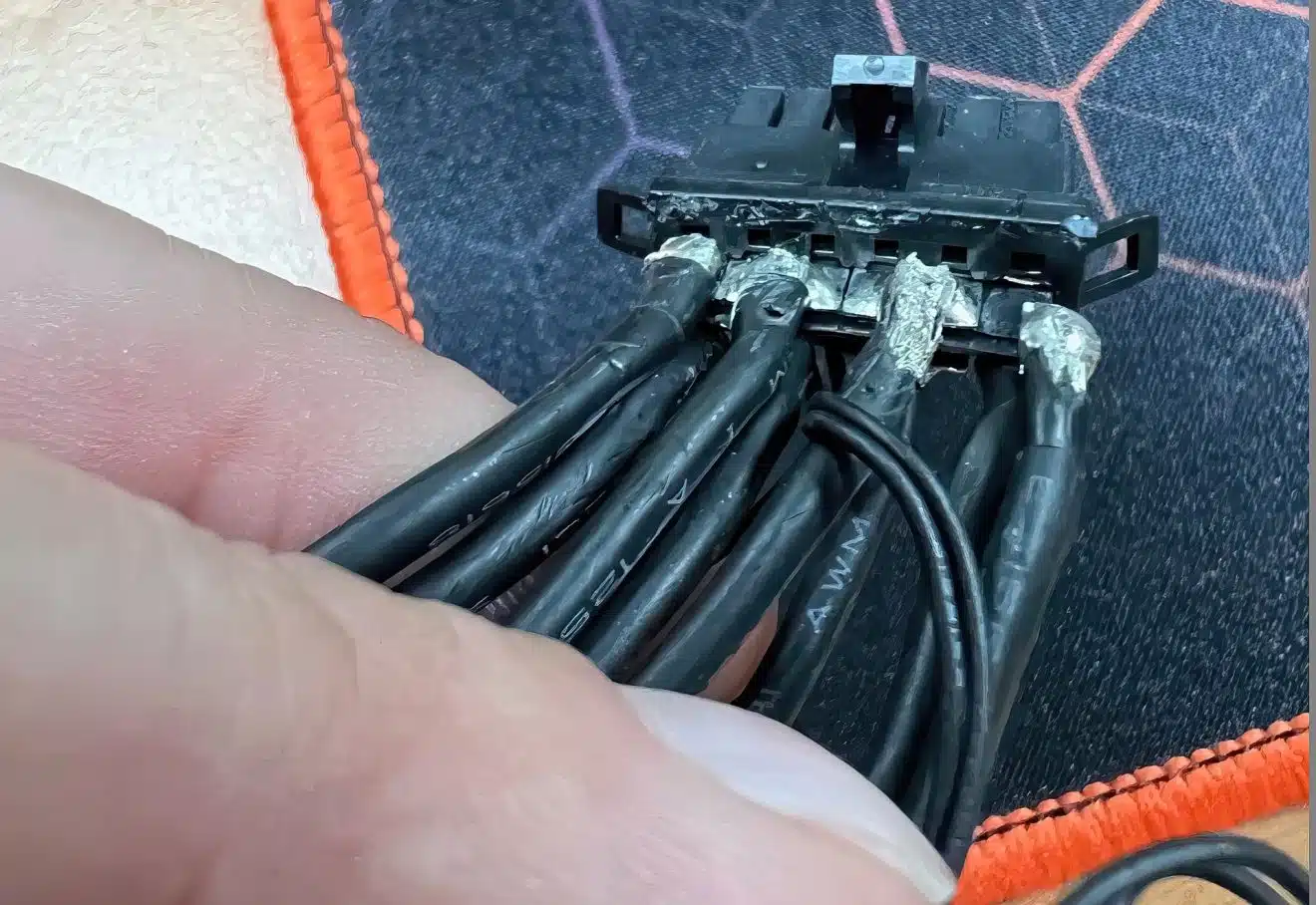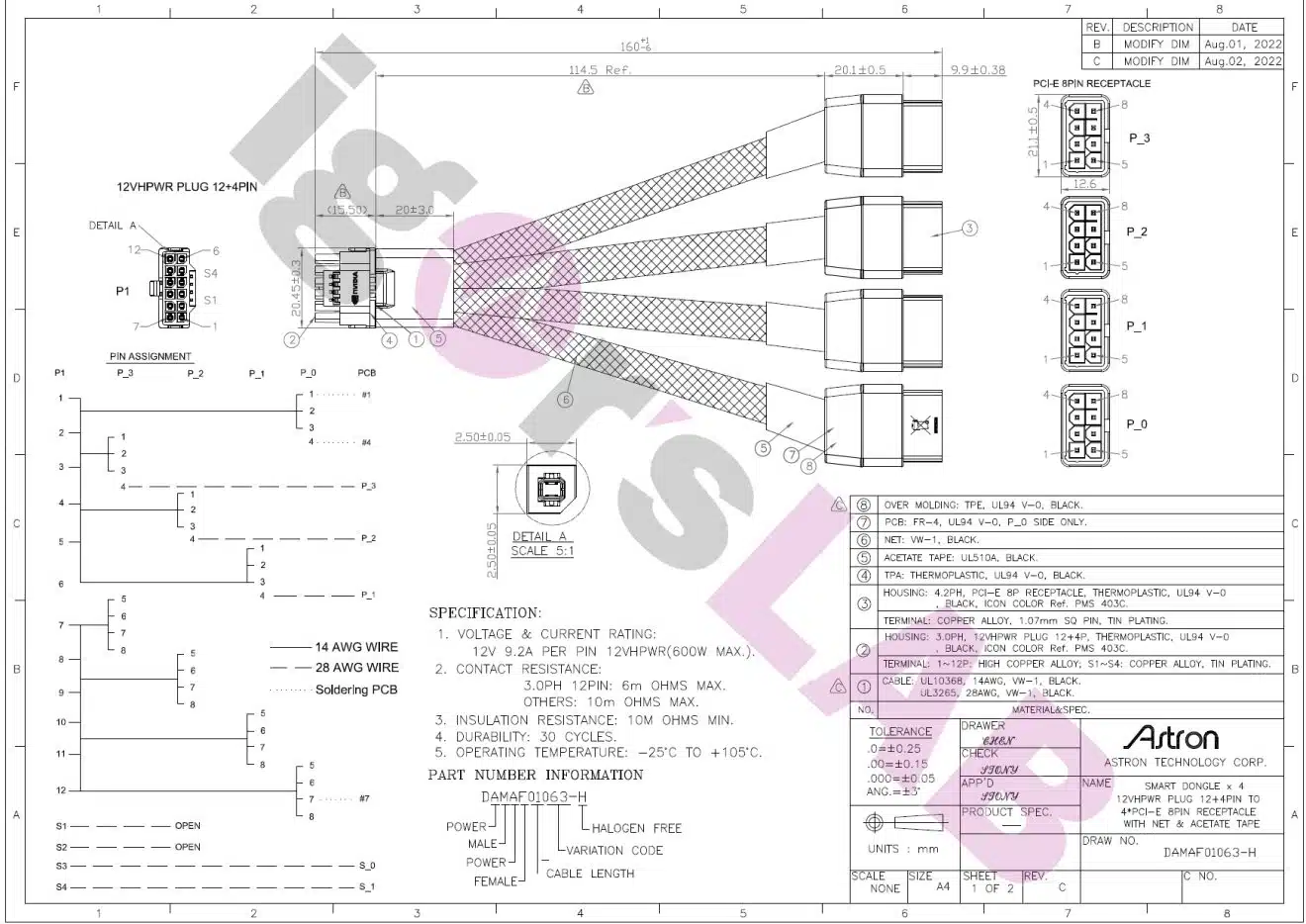
As NVIDIA continues to investigate the RTX 4090 melting adapters, two manufacturers have been identified for making the 12VHPWR adapters. Igor Wallosek (Igor’s Lab) has been in contact with both NVIDIA and its board partners and has just published a detailed report regarding the matter. During the course of his research, he discovered that Astron and NTK are the manufacturers used for various GeForce RTX 4090 card adapters, and it turns out there are significant differences between them.
Astron
Astron is said to be the leading manufacturer of the 12VHPWR adapters, including those with either 3x 8-pin or 4 x 8-pin cables. He was able to obtain a schematic of the adapter but then also in doing a teardown of multiple cables discovered that not all had the contacts soldered as indicated in the schematic. Igor also shares his opinion that the solder design is inadequate but also that the inconsistent soldering could have been an employee training issue.


“In addition, the attachment of the cables to the solder pads of the contacts contradicts the specification from the drawing (picture above). In this (and a few other) cases, one must assume a production error that can ultimately probably be reduced to a single worker who positioned the feeders incorrectly out of ignorance.”
NTK
NTK is a competitor to Astron but Igor notes that he suspects it uses a different type of plastic, and can actually identify them just by touch, but that it also incorporates a different locking mechanism and type of spring contact. NTK’s x4 connector seems to be made from a coarser material. Additionally, NTK’s locking mechanism is said to have a better feel to it when it latches and locks. Finally, the spring connector from NTK has only one open slot while Astron has two and this may play a role in resistance.
User errors and manufacturer defects?
Igor doesn’t wholly point a finger at Astron but does question their quality, and does acknowledge there can be multiple issues at play here. One theory has been about user error in connecting the cables to the adapters. He also notes that the leftover remnants from manufacturing could be inside the connectors thus preventing some users from being able to fully insert them but added that NTK’s plugs seem to need added force. Some reports also showed that NTK’s connectors had lower resistance and higher durability. NVIDIA has provided a PDF to Igor on the two different adapters that can be found here. In his opinion, the types of plastic being used could be a significant factor along with the injection molding process being used.
” The quality of the injection molding must definitely be questioned here.
It is more appropriate to use nylon 66 (PA66) rather than nylon 6 (PA6) because it is much more temperature-resistant. However, PA66 is somewhat more granular and therefore more difficult to process. From my point of view, it is a serious defect that the edges of the connectors were not chamfered or that they did without any post-processing. I also informed NVIDIA about this yesterday.“
PCI SIG to blame?
A plastics supplier was contacted regarding the two types of plastic and issues inherent with injection molding for them. They told Igor that PCI SIG should be aware that “What applies to the beveled inner contacts of the socket must also apply to the outer edges of the connectors.” He believes that PCI SIG could be in part to blame for approving the current adapter by not acknowledging all the risks involved with them. It has been said, and now confirmed by NVIDIA, that a revision is in the works that will change the shroud for the sense pins. Contrary to earlier reports this could, in part, solve the melting issues because the added support for them will mean that if two of the sense pins do not make contact the graphics card will not power up. This aligns with theories about user errors and/or manufacturer defects being potential causes for not properly installing the cables to the connectors. However, he does criticize PCI SIG for approving a design that has been seen to be difficult to use and ergonomically challenging with the cable bending threshold and lack of space for it in some PC cases.
“Turning is another thing that often leads to mistakes. This is because at least another 4 cm (if not more) are added to the up to 14 cm height of the graphics cards after plugging them in when you have to bend the cable in front of the case’s side panel. So you can easily calculate with up to 20 cm if you want to be sure. But who has such a wide case?”
He ultimately concludes his report by saying that the included NVIDIA adapters should only be used as a stopgap and that users should be using ones supplied by their PSU manufacturer since they tend to be of higher quality. There have been reports of these melting as well but they are in the minority (user error?) and he has not been able to replicate any melting on his own.
